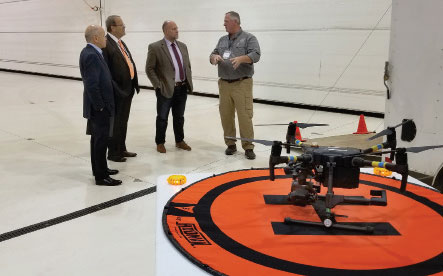The regulatory effort by the Federal Aviation Administration (FAA) to deal with the rapidly expanding unmanned aircraft industry is a work in progress, according to the agency’s former administrator. Michael Huerta, the head of the FAA until last year and the keynote speaker for the recent second annual Utah UAS (Unmanned Aerial Systems) Summit in Ogden, told attendees the task of regulating the use of drones in U.S. airspace is a daunting task.{mprestriction ids="1,3"}
Huerta talked about the scope of regulatory framework the FAA faced as the use of unmanned aircraft ballooned over the past decade. Specifically, he talked about the development of “Part 107,” which was part of the FAA’s initial regulatory efforts.
“We wanted to accomplish two things. First, we wanted to establish the base regulatory framework — something that could be expanded and adapted over time as the industry continues to develop,” Huerta said. “Second, we wanted to create a permissive framework for a number of activities, fully recognizing that it would be a limited set of activities, but with a plan to expand the range of permitted activities over time as we gathered more operational data.”
Ogden Mayor Mike Caldwell, Utah State Sen. Gregg Buxton and Tooele County Commissioner Shawn Milne also spoke to the gathering. Additional panels and discussions took place featuring current UAS programs and projects, Utah’s UAS and aerospace cluster and forecasts of the upcoming demand for UAS technology. Topics included “Drones in the Classroom,” “UAS Research” and “Setting Up a Corporate UAS Program.”{/mprestriction}








